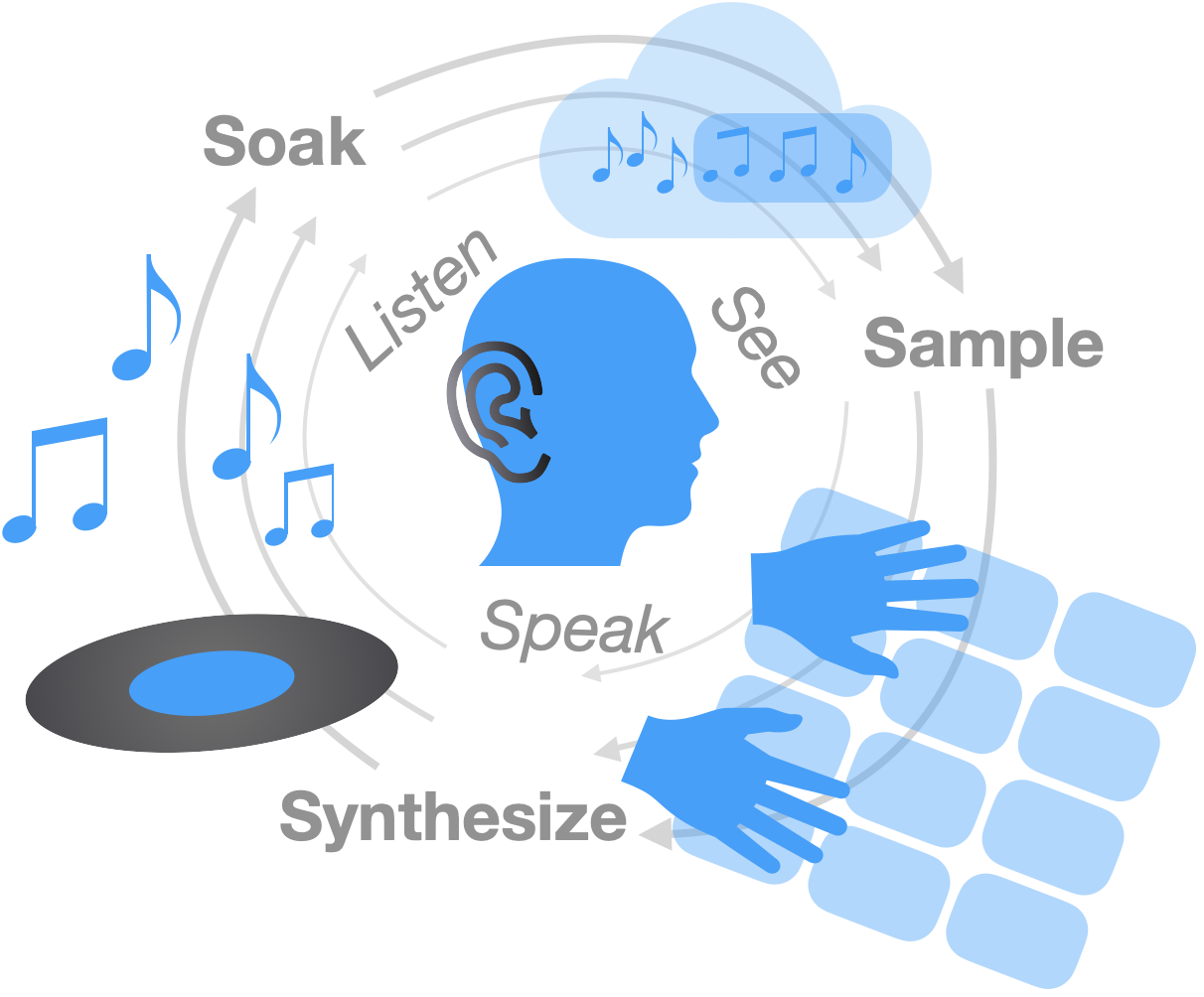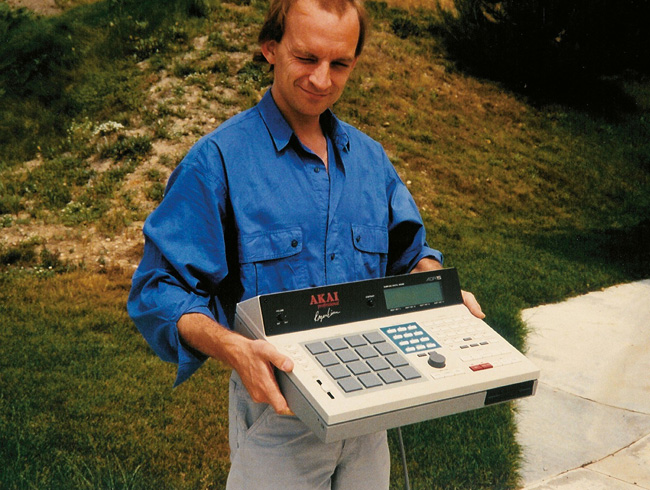Sampler's Spiral

I really like the sample-based music workflow as a metaphor for design loops in general. Gather input, process it and produce output; and do so recursively, turning the output from one stage into input for the next. In other words: soak, sample, synthesize.
Sampling
When a music producer samples, they start with some material they will select, or sample, from. As they listen to it, they will apply preference, recording sections they like into their music production devices.
When we think of sampling, we think both of the process of taking music from another source (listening to a record), and of the process of molding this sampled material. The producer will loop, chop, stretch, pitch, filter, or effect this material to re-mold it according to their designs and inspirations. As they mold, the producer is “sampling” on another level, choosing among the produced sounds, shapes and arrangements.
Sampler’s Spiral
Rather than a line from soak → sample → synthesize, a sampler’s workflow forms a spiral, with the output from one stage being fed back into the next. We can define four stages to this spiral, with the fourth step being an optional recursion.
- Soak in reference material, drawing inspiration out of patterns of preference
- Sample these preferences, either concretely (record the sound) or more abstractly (recreate the shapes, tones, contours, etc.)
- Synthesize these patterns together into new material
- Optionally, repeat from (1) and soak in reference or synthesized material
Rhythm Roulette
Rhythm Roulette, a Youtube show by @MassAppeal, is one of the best demonstrations of the craft of sampling, requiring producers to make a beat on the spot from records chosen while blindfolded. In the show, a consistent pattern is depicted: listening, sample, chop and loop.
In listening, producers are waiting for inspiration. It may be a sound they like, exposed drum loops or vocal sections, or whatever else strikes their fancy. They bring these sounds into their drum machine or computer, and synthesize some new production, altering the sounds characters and arrangements.
Given the time constraints, most only have time for one trip through the spiral, but in the video above, we see Hi-Tek explore a potential sample path, and then recurse back to the records to explore a new one.
MPC

The sampling revolution was most directly a result @roger_linn, who created the MPC, or Music Production Center. When connected to a source of music, like a record player, these machines allowed producers to become samplers in a wholistic sense. They could sampling music from records, chop them up by striking pads, and arrange these patterns on a single device.
The wisdom here is that designers of all things are greatly benefited by devices that implement all aspects of the soak-sample-synthesis spiral, or integrate with other devices that handle a part of it. A few examples of this is CodeSandbox, which allows for “web code” (HTML/CSS/Javascript) to be written, tested and shared in the same place, giving developers to “sample and remix” other’s work. In the same way, Shadertoy allows for the “spiraled” development of shaders.
Applications
In reflecting on design in other contexts, how can we better soak in reference material? How do we sample this material? Can we do so directly (like recording it), or do we have to model it? By what means do we synthesize? How does the sampled feature feature in this synthesis?
As we soak, or “listen”, we learn to see more than what is there. Our imaginations play a strong role in this part. Our minds decompose and decompress what they “hear”, and then recompose and recompress them into new, imagined forms. We transform these by creative equations, building up and branching off to explore variations.
By exposing our eyes and ears to wide swaths of material, and by learning to listen and see discerningly and in transformative ways, we extend our ability to participate with the past record. We grow as designers, by a) expanding our sensory diets, and b) learning to separate and appreciate the flavors.
As we sample, or “see” the parts we wish to select, we use mental creations to engage in tests. Of these, we privilege certain creative paths as candidates to explore in a more meaningful way. A sampler may choose a larger array of samples and find ways to weave them together, or they may choose a small number of samples, and apply many transformations to these.
By improving our ability to capture material (by way of pen/paper, microphone, camera, memory, etc), we improve our intake pipelines, making more material available to ourselves to design with. Time will change our taste, what we choose to select and store away, but we can grow in our awareness over this taste, more concretely identifying it, and more intently stretching it.
In either case, as we synthesize, or “speak” new material by chopping, shaping, stretching and mixing the old, we are creating montages, or assemblages of experienced material brought together into a new experience.
By being more ready for this newly synthesized material to participate in the “spiral”, each synthesized “utterance” can be re-heard with fresh ears, and each iteration of the spiral another step closer to the ultimate design. In this, we can focus more on the journey (continual steps) than the destination (place of rest).
Wrap Up
The Sampler’s Spiral is an incomplete way to understand the creative process, but I think it gives an interesting insight into how we can engage in our own creative processes, learning to better “listen”, “see” and “speak” ultimately improves our ability to “create”.